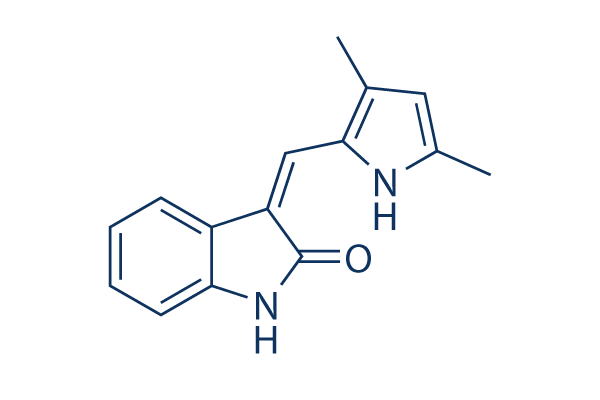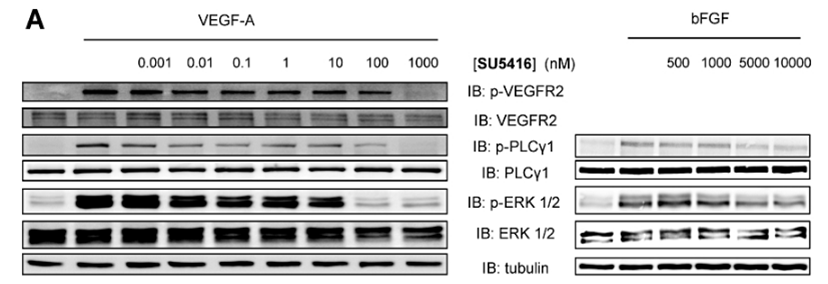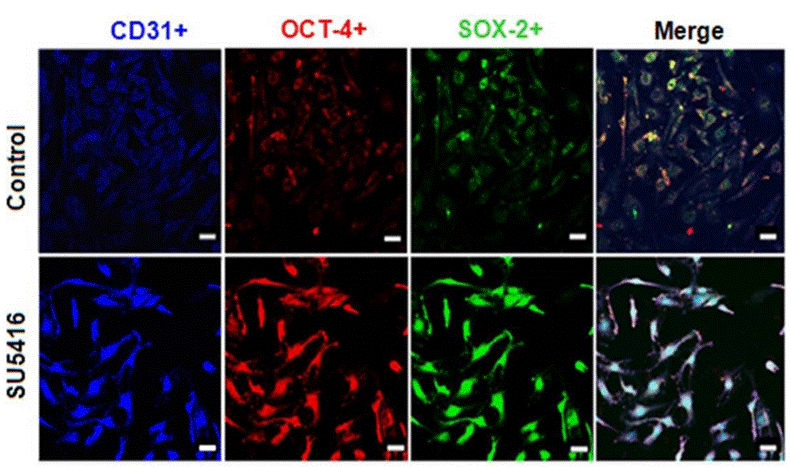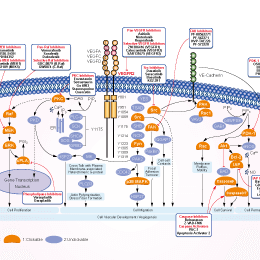
- Bioactive Compounds
- By Signaling Pathways
- PI3K/Akt/mTOR
- Epigenetics
- Methylation
- Immunology & Inflammation
- Protein Tyrosine Kinase
- Angiogenesis
- Apoptosis
- Autophagy
- ER stress & UPR
- JAK/STAT
- MAPK
- Cytoskeletal Signaling
- Cell Cycle
- TGF-beta/Smad
- DNA Damage/DNA Repair
- Compound Libraries
- Popular Compound Libraries
- Customize Library
- Clinical and FDA-approved Related
- Bioactive Compound Libraries
- Inhibitor Related
- Natural Product Related
- Metabolism Related
- Cell Death Related
- By Signaling Pathway
- By Disease
- Anti-infection and Antiviral Related
- Neuronal and Immunology Related
- Fragment and Covalent Related
- FDA-approved Drug Library
- FDA-approved & Passed Phase I Drug Library
- Preclinical/Clinical Compound Library
- Bioactive Compound Library-I
- Bioactive Compound Library-Ⅱ
- Kinase Inhibitor Library
- Express-Pick Library
- Natural Product Library
- Human Endogenous Metabolite Compound Library
- Alkaloid Compound LibraryNew
- Angiogenesis Related compound Library
- Anti-Aging Compound Library
- Anti-alzheimer Disease Compound Library
- Antibiotics compound Library
- Anti-cancer Compound Library
- Anti-cancer Compound Library-Ⅱ
- Anti-cancer Metabolism Compound Library
- Anti-Cardiovascular Disease Compound Library
- Anti-diabetic Compound Library
- Anti-infection Compound Library
- Antioxidant Compound Library
- Anti-parasitic Compound Library
- Antiviral Compound Library
- Apoptosis Compound Library
- Autophagy Compound Library
- Calcium Channel Blocker LibraryNew
- Cambridge Cancer Compound Library
- Carbohydrate Metabolism Compound LibraryNew
- Cell Cycle compound library
- CNS-Penetrant Compound Library
- Covalent Inhibitor Library
- Cytokine Inhibitor LibraryNew
- Cytoskeletal Signaling Pathway Compound Library
- DNA Damage/DNA Repair compound Library
- Drug-like Compound Library
- Endoplasmic Reticulum Stress Compound Library
- Epigenetics Compound Library
- Exosome Secretion Related Compound LibraryNew
- FDA-approved Anticancer Drug LibraryNew
- Ferroptosis Compound Library
- Flavonoid Compound Library
- Fragment Library
- Glutamine Metabolism Compound Library
- Glycolysis Compound Library
- GPCR Compound Library
- Gut Microbial Metabolite Library
- HIF-1 Signaling Pathway Compound Library
- Highly Selective Inhibitor Library
- Histone modification compound library
- HTS Library for Drug Discovery
- Human Hormone Related Compound LibraryNew
- Human Transcription Factor Compound LibraryNew
- Immunology/Inflammation Compound Library
- Inhibitor Library
- Ion Channel Ligand Library
- JAK/STAT compound library
- Lipid Metabolism Compound LibraryNew
- Macrocyclic Compound Library
- MAPK Inhibitor Library
- Medicine Food Homology Compound Library
- Metabolism Compound Library
- Methylation Compound Library
- Mouse Metabolite Compound LibraryNew
- Natural Organic Compound Library
- Neuronal Signaling Compound Library
- NF-κB Signaling Compound Library
- Nucleoside Analogue Library
- Obesity Compound Library
- Oxidative Stress Compound LibraryNew
- Plant Extract Library
- Phenotypic Screening Library
- PI3K/Akt Inhibitor Library
- Protease Inhibitor Library
- Protein-protein Interaction Inhibitor Library
- Pyroptosis Compound Library
- Small Molecule Immuno-Oncology Compound Library
- Mitochondria-Targeted Compound LibraryNew
- Stem Cell Differentiation Compound LibraryNew
- Stem Cell Signaling Compound Library
- Natural Phenol Compound LibraryNew
- Natural Terpenoid Compound LibraryNew
- TGF-beta/Smad compound library
- Traditional Chinese Medicine Library
- Tyrosine Kinase Inhibitor Library
- Ubiquitination Compound Library
-
Cherry Picking
You can personalize your library with chemicals from within Selleck's inventory. Build the right library for your research endeavors by choosing from compounds in all of our available libraries.
Please contact us at info@selleckchem.com to customize your library.
You could select:
- Antibodies
- Bioreagents
- qPCR
- 2x SYBR Green qPCR Master Mix
- 2x SYBR Green qPCR Master Mix(Low ROX)
- 2x SYBR Green qPCR Master Mix(High ROX)
- Protein Assay
- Protein A/G Magnetic Beads for IP
- Anti-Flag magnetic beads
- Anti-Flag Affinity Gel
- Anti-Myc magnetic beads
- Anti-HA magnetic beads
- Magnetic Separator
- Poly DYKDDDDK Tag Peptide lyophilized powder
- Protease Inhibitor Cocktail
- Protease Inhibitor Cocktail (EDTA-Free, 100X in DMSO)
- Phosphatase Inhibitor Cocktail (2 Tubes, 100X)
- Cell Biology
- Cell Counting Kit-8 (CCK-8)
- Animal Experiment
- Mouse Direct PCR Kit (For Genotyping)
- New Products
- Contact Us
Semaxanib (SU5416)
Synonyms: semaxinib
Semaxanib (SU5416, semaxinib) is a potent and selective VEGFR(Flk-1/KDR) inhibitor with IC50 of 1.23 μM, 20-fold more selective for VEGFR than PDGFRβ, lack of activity against EGFR, InsR and FGFR. Phase 3.Semaxanib (SU5416) can be used to induce animal models of chronic intermittent hypoxia.

Semaxanib (SU5416) Chemical Structure
CAS No. 204005-46-9
Purity & Quality Control
Batch:
Purity:
99.99%
99.99
Semaxanib (SU5416) Related Products
Signaling Pathway
Cell Data
| Cell Lines | Assay Type | Concentration | Incubation Time | Formulation | Activity Description | PMID |
|---|---|---|---|---|---|---|
| MCF7 cells | Cytotoxicity assay | 48 h | Cytotoxicity against human MCF7 cells after 48 hrs by CCK8 assay, IC50=3.1 nM | 23777898 | ||
| mouse B16F10 cells | Cytotoxicity assay | 48 h | Cytotoxicity against mouse B16F10 cells after 48 hrs by CCK8 assay, IC50=3.6 nM | 23777898 | ||
| human U251 cells | Function assay | Inhibition of VEGFR2 in human U251 cells by phosphotyrosine ELISA, IC50=12.9 nM | 24900865 | |||
| human A431 cells | Function assay | Antiangiogenic activity against human A431 cells, IC50=0.085 μM | 20403693 | |||
| CHO cells | Function assay | Inhibition of VEGFR induced autophosphorylation of human Vascular endothelial growth factor receptor 2 (VEGFR2) transfected in CHO cells, IC50=0.884 μM | 12477352 | |||
| human MCF7 cells | Proliferation assay | 4 days | Antiproliferative activity against human MCF7 cells after 4 days by coulter counter method, IC50=1.9 μM | 23124213 | ||
| human SF539 cells | Function assay | Inhibition of PDGFRbeta in human SF539 cells by phosphotyrosine ELISA, IC50=2.4 μM | 19748785 | |||
| A431 cells | Function assay | Inhibition of VEGFR2 expressed in human A431 cells, IC50=12.9 μM | 20558072 | |||
| HUVEC cells | Proliferation assay | 72 h | Antiproliferative activity against human HUVEC cells assessed as reduction in cell viability after 72 hrs by trypan blue assay, GI50=13.6 μM | 26318056 | ||
| human HMEC1 cells | Proliferation assay | 7 days | Antiproliferative activity against human HMEC1 cells after 7 days by coulter counter method, IC50=15 μM | 23124213 | ||
| human HeLa cells | Proliferation assay | 4 days | Antiproliferative activity against human HeLa cells after 4 days by coulter counter method, IC50=20 μM | 23124213 | ||
| Click to View More Cell Line Experimental Data | ||||||
Biological Activity
| Description | Semaxanib (SU5416, semaxinib) is a potent and selective VEGFR(Flk-1/KDR) inhibitor with IC50 of 1.23 μM, 20-fold more selective for VEGFR than PDGFRβ, lack of activity against EGFR, InsR and FGFR. Phase 3.Semaxanib (SU5416) can be used to induce animal models of chronic intermittent hypoxia. | ||
|---|---|---|---|
| Targets |
|
| In vitro | ||||
| In vitro | Semaxanib inhibits VEGF-dependent phosphorylation of the Flk-1 receptor in Flk-1-overexpressing NIH 3T3 cells with IC50 of 1.04 μM. Semaxanib inhibits PDGF-dependent autophosphorylation in NIH 3T3 cells with IC50 of 20.3 μM. Semaxanib inhibits VEGF- and FGF-driven mitogenesis in a dose-dependent manner with IC50 of 0.04 and 50 μM, respectively. Semaxanib treatment has no effect on the in vitro growth of C6 glioma, Calu 6 lung carcinoma, A375 melanoma, A431 epidermoid carcinoma, and SF767T glioma cells (all IC50s > 20 μM). [1] | |||
|---|---|---|---|---|
| Kinase Assay | Biochemical kinase assays | |||
| Solubilized membranes from 3T3 Flk-1 cells are added to polystyrene ELISA plates that had been precoated with a monoclonal antibody that recognizes Flk-1. After an overnight incubation with lysate at 4 ℃, serial dilutions of SU5416 are added to the immunolocalized receptor. To induce autophosphorylation of the receptor, various concentrations of ATP are added to the ELISA plate wells containing serially diluted solutions of SU5416. The autophosphorylation is allowed to proceed for 60 min at room temperature and then stopped with EDTA. The amount of phosphotyrosine present on the Flk-1 receptors in the individual wells is determined by incubating the immunolocalized receptor with a biotinylated monoclonal antibody directed against phosphotyrosine. After removal of the unbound anti-phosphotyrosine antibody, avidin-conjugated horseradish pero-idase H is added to the wells. A stabilized form of 3,3 9,5,5 9-tetramethyl benzidine dihydrochloride and H2O2 is added to the wells. The color readout of the assay is allowed to develop for 30 min, and the reaction is stopped with H2SO4. | ||||
| Cell Research | Cell lines | HUVECs | ||
| Concentrations | ~100 μM | |||
| Incubation Time | 2 days | |||
| Method | HUVECs are plated in 96-well, flat-bottomed plates (1×104 cells/100 μL/well) in F-12K media containing 0.5% heat-inactivated FBS and cultured at 37 ℃ for 24 h to quiesce the cells. Serial dilutions of compounds prepared in medium containing 1% DMSO are then added for 2 h, followed by the addition of mitogenic concentrations of either VEGF at 5 ng/mL or 20 ng/mL or acidic fibroblast growth factor at 0.25–5 ng/mL in media. The final concentration of DMSO in the assay is 0.25%. After 24 h, either [3H]thymidine (1 μCi/well) or BrdUrd is added, and the cell monolayers are incubated for another 24 h. The uptake of either [3H]thymidine or BrdUrd into cells is quantitated using a liquid scintillation counter or a BrdUrd ELISA, respectively. | |||
| Experimental Result Images | Methods | Biomarkers | Images | PMID |
| Western blot | p-VEGFR2 / VEGFR2 / p-PLCγ1 / PLCγ1 / p-ERK / ERK |

|
21699503 | |
| Immunofluorescence | CD31 / OCT-4 / SOX-2 |

|
25665868 | |
| In Vivo | ||
| In vivo | Semaxanib dose-related inhibits growth of A375 tumor in vivo. A >85% inhibition of subcutaneous tumor growth is observed with daily i.p. administration of SU5416 in DMSO at Semaxanib, without measurable toxicity. Semaxanib shows broad spectrum antitumor activity. SU5416 significantly inhibits the subcutaneous growth of 8 of 10 tumor lines tested (A431, Calu-6, C6, LNCAP, EPH4-VEGF, 3T3HER2, 488G2M2 and SF763T cells) with an average mortality rate of 2.5%. [1] Semaxanib (25 mg/kg/day) displays potent antiangiogenic activity, resulting in a significant reduction of both the total and functional vascular density of the tumor microvasculature. [2] | |
|---|---|---|
| Animal Research | Animal Models | Human melanoma xenografts A375 |
| Dosages | 25 mg/kg | |
| Administration | i.p. daily | |
| NCT Number | Recruitment | Conditions | Sponsor/Collaborators | Start Date | Phases |
|---|---|---|---|---|---|
| NCT00006247 | Terminated | Brain and Central Nervous System Tumors |
Pediatric Brain Tumor Consortium|National Cancer Institute (NCI) |
August 2000 | Phase 1 |
| NCT00005642 | Completed | Unspecified Adult Solid Tumor Protocol Specific |
Case Comprehensive Cancer Center|National Cancer Institute (NCI) |
May 2000 | Phase 1 |
| NCT00005647 | Completed | Head and Neck Cancer |
Case Comprehensive Cancer Center|National Cancer Institute (NCI) |
May 2000 | Phase 1 |
Chemical Information & Solubility
| Molecular Weight | 238.28 | Formula | C15H14N2O |
| CAS No. | 204005-46-9 | SDF | Download Semaxanib (SU5416) SDF |
| Smiles | CC1=CC(=C(N1)C=C2C3=CC=CC=C3NC2=O)C | ||
| Storage (From the date of receipt) | |||
|
In vitro |
DMSO : 17 mg/mL ( (71.34 mM) Moisture-absorbing DMSO reduces solubility. Please use fresh DMSO.) Ethanol : 2 mg/mL Water : Insoluble |
Molecular Weight Calculator |
|
In vivo Add solvents to the product individually and in order. |
In vivo Formulation Calculator |
||||
Preparing Stock Solutions
Molarity Calculator
In vivo Formulation Calculator (Clear solution)
Step 1: Enter information below (Recommended: An additional animal making an allowance for loss during the experiment)
mg/kg
g
μL
Step 2: Enter the in vivo formulation (This is only the calculator, not formulation. Please contact us first if there is no in vivo formulation at the solubility Section.)
% DMSO
%
% Tween 80
% ddH2O
%DMSO
%
Calculation results:
Working concentration: mg/ml;
Method for preparing DMSO master liquid: mg drug pre-dissolved in μL DMSO ( Master liquid concentration mg/mL, Please contact us first if the concentration exceeds the DMSO solubility of the batch of drug. )
Method for preparing in vivo formulation: Take μL DMSO master liquid, next addμL PEG300, mix and clarify, next addμL Tween 80, mix and clarify, next add μL ddH2O, mix and clarify.
Method for preparing in vivo formulation: Take μL DMSO master liquid, next add μL Corn oil, mix and clarify.
Note: 1. Please make sure the liquid is clear before adding the next solvent.
2. Be sure to add the solvent(s) in order. You must ensure that the solution obtained, in the previous addition, is a clear solution before proceeding to add the next solvent. Physical methods such
as vortex, ultrasound or hot water bath can be used to aid dissolving.
Tech Support
Answers to questions you may have can be found in the inhibitor handling instructions. Topics include how to prepare stock solutions, how to store inhibitors, and issues that need special attention for cell-based assays and animal experiments.
Tel: +1-832-582-8158 Ext:3
If you have any other enquiries, please leave a message.
* Indicates a Required Field
Tags: buy Semaxanib (SU5416) | Semaxanib (SU5416) supplier | purchase Semaxanib (SU5416) | Semaxanib (SU5416) cost | Semaxanib (SU5416) manufacturer | order Semaxanib (SU5416) | Semaxanib (SU5416) distributor







































